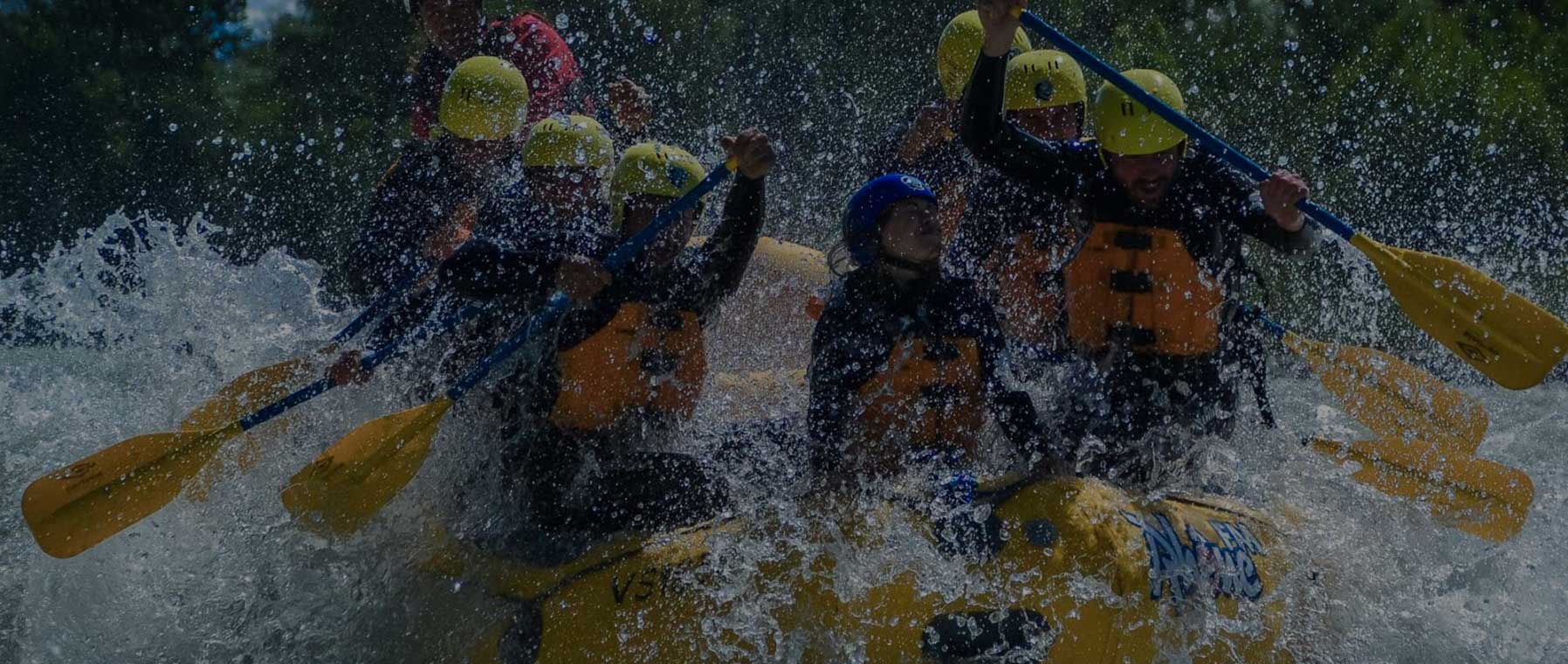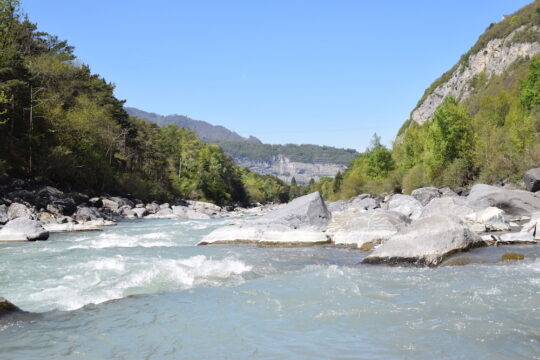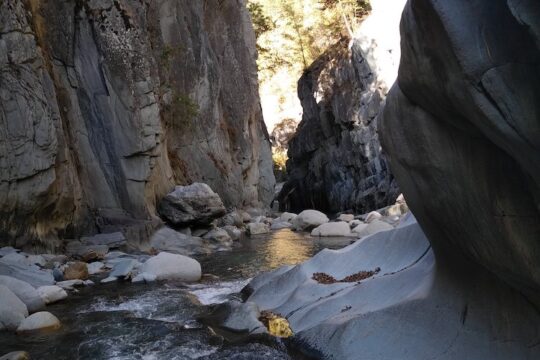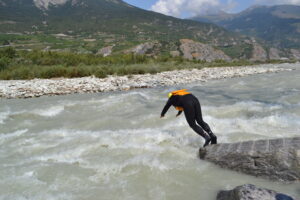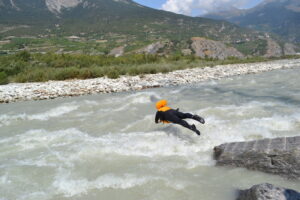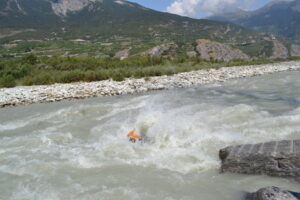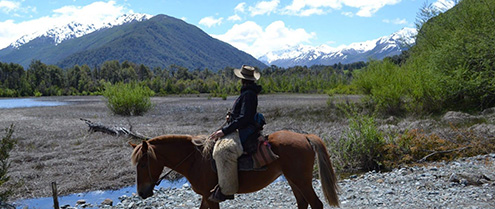13 Nov Swimming in a river
"There are whirlpools in the Rhône
How many clients from the Valais have told me "I will never go on the Rhône, there are whirlpools"!
The Rhone is a volume river that rises in the Valais Alps in Switzerland. Starting from a glacier, the water gushes and cascades down the mountain. The further down the valley it descends, the larger it grows, reinforced by the side rivers.
The Rhone has changed from a torrent to a river with a large volume that is great for rafting. In the Finges Park, the water level can reach more than 350 m3/second.
From Sierre onwards, it is channelled, and when the water level rises during snowmelt or very heavy and long rains, the speed of the water increases and this is what makes it devastating when it leaves its bed. The water reaches a speed that sweeps away everything in its path.
Water movements
The whirlpools that can be seen in the Rhone are created by rocks under the water and by rocks on the banks that obstruct the current, slowing down the water that turns behind the rock. This is called a "counter-current". These water movements can destabilise a boat and are used to stop and play in the current.
The dangers of the Rhône in the Valais
Water temperature
The greatest danger of the Rhône in Valais is its temperature. Over the year, it fluctuates in Sion between 4 and 10°C. Coming from the glacier or from the melting snow, close to its source and fed by glacial rivers, the water does not have time to warm up.
The greatest risk is hypothermia. Venturing out to swim in the Rhone should only be done with the proper equipment, wetsuit, booties, waistcoat and helmet.
The rapids
When the bed becomes narrower or the slope steepens, the water speeds up, creating a rapid. If rocks line the riverbed, this changes the current structure creating waves and rollers. This is what makes rafting and kayaking so exciting.
The depth at the point of the rapid is important. To swim in a river it must be deep enough to avoid bumping into rocks. In addition, it is important to swim in a river if the water is higher than the knee and not to stand up, at the risk of getting stuck against a rock and being held captive by the pressure of the water on the leg.
Safety rules for swimming in white water
Of course, the first recommendation is to learn with people who are familiar with whitewater swimming. However, there are some basic rules:
- Have the appropriate equipment: wetsuit adapted to the temperature, booties, waistcoat, helmet and safety rope .
- Do not go swimming alone in a river and always have someone on the bank with a safety rope.
- Never try to stand up in a river and risk getting your leg stuck, swim and keep your legs above water!
For fishermen
There are many anglers in our area who go out to tease the fish in our rivers. Wearing boots, they enter the current to get as close as possible to their finned friends.
The risk for them is a rapid rise in water level due to the opening of a dam or the breaking of a natural dam made of branches.
If you are swept away by rising water, don't try to stand up in the middle of the river but try to swim to shore and hold on to a rock. Clearly, long boots will not help.
To prevent this type of accident, remember to mark the water level with a boulder and check it regularly. If the water rises, get out of the bed quickly and stand back. It goes very fast.
If you plan to stay in one place, a rope tied to a tree to hold on to may help. However, never tie yourself to a rope.
The river is fascinating, lively, changing and an exciting playground. Just like the mountains, it can hold surprises and its dangers come suddenly. Respect it! It is not by channelling it, by correcting it that it will be tamed. A river, even if it has been corrected for the third time, can still be dangerous when it floods.




